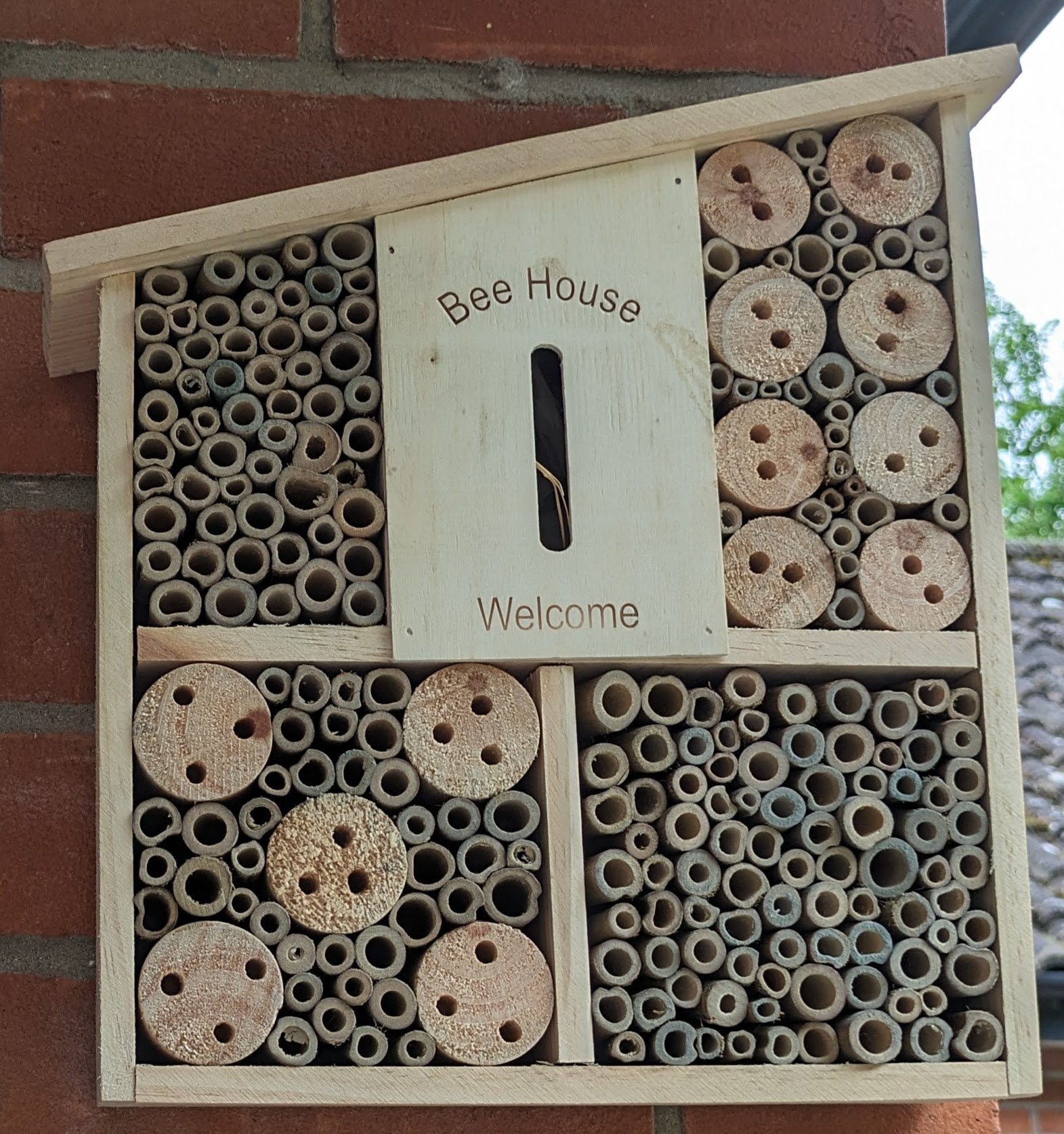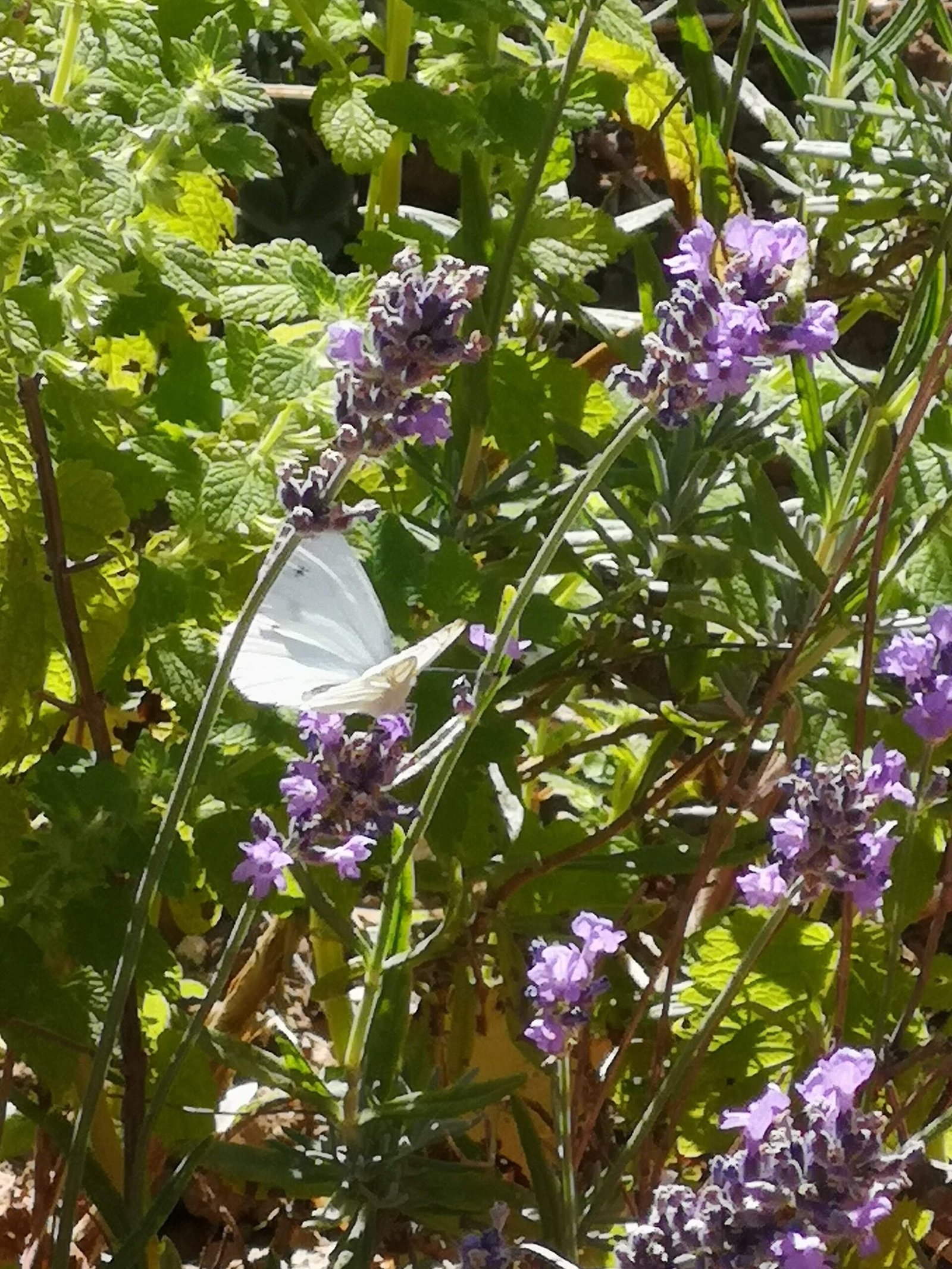Pollinators that you can find in your garden include bees, wasps, butterflies, moths, beetles, and other small animals.
What are pollinators?
Pollination is a method of reproduction where pollen from the male part of the flower (stamen) is transferred to the female part of the same flower or another flower (stigma). This enables the plant to produce fruit and seeds. Some plants are self-pollinating, others are pollinated by the wind or water, and some need animals to do the job for them. When animals are feeding on the plants, they often accidentally transfer pollen from one flower to another.
So what animals pollinate plants?
Please note that some links in this post are affiliate links, meaning I may earn a small commission if you purchase through them. Thank you for supporting me.
Bees & Wasps
How bees pollinate plants
Bees forage for pollen as a food source, and have lots of little hairs covering their legs so that they can collect pollen for storing or for feeding their young. If you look carefully at the bees that visit your flowers, you might be able to see the golden pollen covering their legs. As these bees move from flower to flower, collecting more pollen, it can brush off, pollinating flowers.
Creating habitat for bees
There are a few ways in which you can create a bee-friendly garden, including providing food sources, water, and shelter. Bees seem to particularly favour lavender, foxgloves, cosmos, hollyhocks, and hellebores, but having a variety of flowers to provide them with pollen is good too. You can provide bees with water by putting out a shallow dish, tray, or saucer filled with water, with pebbles and sticks inside for bees to avoid drowning. Bees can nest underground in burrows, in cavities, stick piles, and solitary bees can also use ‘insect hotels’.


How wasps pollinate plants
Wasps forage for nectar as a food source, and as they do this they can accidentally transfer pollen to other flowers by the pollen sticking to the hairs that cover their body and brushing off on flowers. However, they have less hairs than bees, and they don’t intentionally get the pollen, so they aren’t as good at pollinating as bees are.
Wasps can also act as pest control in your garden, as they feed on the larvae of various insects, including aphids, flies, and caterpillars.
Creating habitat for wasps
There are a few ways to make your garden more wasp-friendly, including providing food sources, water, and shelter. Provide them with places to nest by leaving some soil undisturbed, having some log piles, and having some sheltered areas. Provide them with food sources in your garden, which includes insects as well as a variety of flowers, with figwort, coneflowers, hyssop, and Queen Anne’s Lace being among their favourite. You can provide wasps with water by putting out a shallow dish, tray, or saucer filled with water, with pebbles and sticks inside for wasps to avoid drowning.
Butterflies & Moths
How butterflies pollinate plants
Butterflies forage for nectar as a food source, and as they do this they can accidentally transfer pollen by it attaching to their legs and then it brushing off on other flowers. Butterflies tend to visit open flowers and will go to the edges a lot more than bees, which will go to the middle of the flower. So while they might not pollinate as well as bees, they pollinate flowers that bees might not favour, and can gather pollen from areas of a flower that a bee won’t.
Creating habitat for butterflies
Butterflies like to hide under leaves or hidden in bark and bushes, so having these in your garden can provide them with what they need. They can also use ‘insect hotels’ if you want to go down that route. They like warmth, so having some rocks, branches, or bare soil for them to sit on and bask in the sun, and flowers in sunny, sheltered spots can keep them coming back to your garden. Some of their favourite flowers include buddleia, lavender, red campion, cornflower, primrose, clover, sedum, birds-foot-trefoil. Providing host plants for caterpillars is also important for attracting butterflies to your garden, as they are the larval stage of butterflies. The preferred plants by caterpillars varies based on the species, but there are some plants that are preferred by many, including birds-foot trefoil, nasturtium, red clover, honesty, marjoram, foxgloves. You can provide butterflies with water by putting out a shallow dish, tray, or saucer filled with water, with pebbles and sticks inside for butterflies to avoid drowning.



How moths pollinate plants
Moths forage for nectar as a food source, and as they do this they can accidentally transfer pollen by it attaching to their legs and then it brushing off on other flowers. Moths tend to visit open flowers and will go to the edges a lot more than bees, which will go to the middle of the flower. So while they might not pollinate as well as bees, they pollinate flowers that bees might not favour, and can gather pollen from areas of a flower that a bee won’t. They are also very beneficial as a lot of moths are nocturnal and will pollinate nocturnal flowers and provide additional pollination to flowers that stay open day and night.
Creating habitat for moths
Moths like to hide under leaves or hidden in bark and bushes, so having these in your garden can provide them with what they need. They can also use ‘insect hotels’ if you want to go down that route. Flowers that release a scent in the evening are preferred by moths. This includes morning glory, evening primrose, mock orange, sweet pea, wisteria, honeysuckle. You can provide moths with water by putting out a shallow dish, tray, or saucer filled with water, with pebbles and sticks inside for moths to avoid drowning.






Leave a Reply